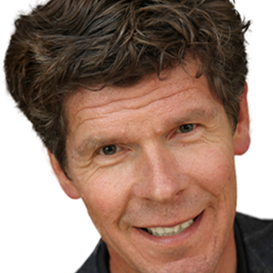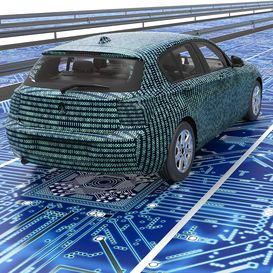Editorial

Dear ITEA Community,
The content of today’s news is regularly connected with ITEA’s domain of software innovation. For example, many examples of debates about AI are taking place on TV and social media or in the newspapers. Is it ethically sound, how do we set boundaries to all the application possibilities, can humans control technology or will it control them in the future? Whatever the answers and philosophical thoughts are, in the end we probably all agree that the technology is there to support human lives. Many of ITEA’s challenges contribute to human’s wellbeing and preserving our planet.
Smart Health is, of course, a very good example of how ITEA improves our lives. This edition includes various projects that led to higher efficacy and patient friendliness in the medical profession. Icometrix is a beautiful example of how neuro-imaging has been improved by AI, leading to better diagnosis and clinical decision-making, while Austrian IT-V Medizintechnik creates a huge benefit for patients by enabling precision radiation therapy against cancer. But it even goes beyond clinical applications: Mad@Work deals with the increasingly relevant topic of work stress and the digital solutions that help prevent it.
The Austrian country focus in this edition also touches the human aspect. While the Austrian FFG supports digitalisation via roadmaps in different areas, such as traditional industries, digital humanism remains key. In other words, the creation of technology solutions is a human process that needs to be generated by human interaction, like a fuel.
To benefit from the different ways that humans can contribute, diversity in project consortia is clearly very important. As an advocate for diversity and gender equality, Vinnova is a true frontrunner in this respect. Read how Vinnova created its own approach to increasing gender equality, female participation and inclusion in funded R&D projects and how well diversity matches with ITEA’s bottom-up and ‘family’ approach in which every good idea is valued in a trusted environment.
Another great example is Jennifer Overbury, a contributor to gender equality who encourages women in projects and believes that technological innovation cannot be achieved only by a ‘technological-minded focus’. There is always the challenge of balancing project goals with technology optimisation. Sometimes, an ‘extra-technological view’ is needed to keep technologists’ feet on the ground instead of endlessly improving their ideas, which may end up as a castle in the air.
During last year's celebration of ITEA's 25th anniversary, we saw many groundbreaking innovations from the ITEA Community. Over these years, we saw that for all those innovations developed, it has always been people business. Whatever challenges and opportunities new technologies bring in the future, ‘people business’ will always remain a leading asset for ITEA.
Just like the Boss/Bruce Springsteen already sang in the 90s, just before the digital revolution of the internet started: “Share a little of that Human Touch”.
Jan Jonker
Other chapters
Use the arrows to view more chapters

Editorial
By Jan Jonker

Country Focus: Austria
Tapping into innovative potential and using new knowledge for market growth

IT-V Medizintechnik
Achieving a better position in international innovation

ITEA Success story: PIANiSM
Pioneering predictive maintenance for a smarter future in manufacturing

Advancing gender equality in innovation
Insights for ITEA from Vinnova

ITEA Success story: EMPHYSIS
EMPHYSIS: Bridging the gap between digital simulation and embedded software with eFMI®

Community Talk with Jennifer Overbury
Smart project management in a technical domain

SME in the Spotlight: icometrix
Transforming neuroimaging with AI

End user happiness: Mad@Work
Digital solutions enhancing personal well-being and organisational success

